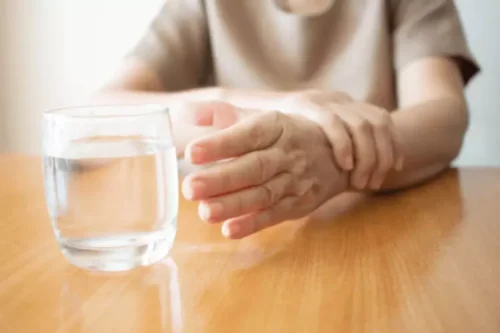How Can We Better Support the Mental Well-Being of Veterans Returning from Service? The Brink Boston University

With regard to behavioral treatments, exposure-based interventions are recommended given the greater improvement in PTSD symptoms observed, coupled with significant reductions in SUD severity experienced. The available evidence suggests that medications used to treat one disorder (AUD ptsd and alcohol abuse or PTSD) can be safely used and with possible efficacy in patients with the other disorder. However, additional research on pharmacological agents based on shared neurobiology of AUD and PTSD would be useful. The survey data showed that 77% of the respondents had experienced a qualifying traumatic event, as defined by the DSM-IV.18 The most commonly reported stressful life events were indirect experience of 9/11, serious illness or injury to someone close, and unexpected death of someone close. Individuals with PTSD were more likely to report mood disorders, anxiety disorders, SUD, and suicidal behavior than respondents without PTSD. Also, respondents with PTSD were more likely than those without PTSD to have co-occurring AUD, after controlling for sociodemographic factors such as age and race.
Co-Occurring Alcohol Use Disorder and Post-Traumatic Stress Disorder - Editor's Note
- Military personnel and Veterans with co-occurring PTSD and addiction require treatment from providers that are skilled at treating both disorders.
- There was a significant decrease over time in PTSD symptoms for all subjects as a group (significant effect of time), but no medication effect between the paroxetine and desipramine treated subjects.
- Additional interventions that integrate cognitive behavioral and other therapeutic approaches include emotion-focused therapy79 and brief eclectic psychotherapy.80 The empirical literature on these approaches is limited, but the research demonstrates promising findings.
- Behavioral interventions are a primary component of the treatment of AUD and can be used as freestanding treatments or as part of a more comprehensive treatment plan that includes pharmacotherapies.
The mood disorders that most commonly co-occur with AUD are major depressive disorder and bipolar disorder. Evidence indicates that concurrent treatment of PTSD and AUD can be safe and effective.30,39 Before reporting on concurrent treatment approaches, we describe evidence-based treatments targeting either PTSD or AUD. We also discuss the efficacy of these treatments for military and veteran populations.
Concurrent treatments

Interestingly the noradrenergic antidepressant desipramine was as effective as the serotonergic paroxetine for PTSD and desipramine had other advantages in alcohol use outcomes. Prazosin was effective in decreasing alcohol use in one study (Simpson et al. 2015) but not in the other larger trial (Petrakis et al. 2016); prazosin was not effective in treating PTSD symptoms in either study evaluating its efficacy. The neurokinin-1 receptor antagonist aprepitant had no effect on PTSD symptoms or alcohol craving (Kwako et al. 2015). One of the three studies clearly found that sertraline was more effective in decreasing PTSD symptoms than placebo (Hien et al. 2015) while another found a trend-level advantage of sertraline over placebo on PTSD outcomes (Brady).
- Furthermore, it is unclear whether the correlates of comorbid PTSD in AUD are uniform across different countries and ethnicities.
- Individuals who had problems with alcohol were almost three times as likely to have a co-occurring mental disorder as those with no alcohol problem.
- Additionally, American Addiction Centers (AAC) understands the specific challenges faced by military members and Veterans, and many of our treatment centers offer programming specifically tailored to the unique needs of Veterans and their families.
Behavioral Treatments for Alcohol Use Disorder and Post-Traumatic Stress Disorder
- Serum BDNF concentration was determined by enzyme-linked immunosorbent assay (ELISA), using a commercially available kit Human BDNF Quantikine ELISA kit (R&D Systems, Minneapolis, MN, USA) based on a sandwich enzyme immunoassay technique.
- The Petrakis and Simpson (2017) review of pharmacological treatments is specific to the comorbidity of PTSD and AUD, as compared to other substance use disorders, and it includes several more recently published randomized controlled trials that are not included in prior reviews on this topic.
- At an average of 30.0 years of age (SD 10.2), female participants were significantly younger than their male counterparts at 36.2 years of age (SD 9.9).
- It should be noted, however, that to exclude patients with comorbid PTSD and AD who are taking psychotropic medications would not only make recruitment more challenging, it would also decrease the generalizability of the findings.
- Sleep disturbances and nightmares were also assessed; these significantly improved over time but there was no effect of medication.
- Less than 20% of respondents who experienced AUD in their lifetime ever sought treatment for the condition.
Those unable to read or write (eight men and eight women) were read out the contents of the information sheet (Nepali language) individually by the first author. Then, the potential participant was given a chance to ask any further questions pertaining to the study and their participation. Those willing to participate were asked to provide a thumbprint with a witness (treatment staff or patient party)'s signature, confirming that any of the participant’s queries had been answered by the researcher and that the consent was given freely. The study was approved by the Regional Committee for Medical Research Ethics of Norway and the National Health Research Council of Nepal. A good treatment program https://ecosoberhouse.com/article/alcohol-misuse-long-term-effects-of-alcohol-on-the-body/ will design a program tailored to your individual needs. It will help you process trauma, stop drinking, and learn new, healthier coping mechanisms going forward.

Treatments for AUD
- Several empirically supported behavioral interventions have been disseminated across populations and treatment settings.
- Although screening and monitoring for AUD are key steps in the management of TBI, many patients, particularly those who do not receive specialized or follow-up care, are not assessed for AUD risk.
- The program, called Strength at Home, is the only domestic violence program found effective in a randomized clinical trial in preventing and reducing physical and psychological violence in service members and veterans, Taft says.
- Alcohol use also causes its own problem, related to both mental and physical health.
In this study, there was no significant improvement in PTSD symptoms over time and no medication effect. Sleep outcomes were also assessed but there was no change over time and no medication effect. The second prazosin study was conducted in mostly male veterans from two VA outpatient sites (Petrakis et al. 2016).

These interventions are flexible and can be applied in individual or group therapy formats. CBTs for AUD focus on the identification and modification of maladaptive cognitions and behaviors that contribute to alcohol misuse.21 Behavioral treatments for people with AUD also target motivation for change and improvement of specific skills to reduce the risk for relapse. Three studies have evaluated medications that were hypothesized to treat both disorders. Two of these studies used the alpha-adrenergic medication prazosin and one study used the neurokinin-1 receptor antagonist aprepitant in a proof of concept laboratory study. The first prazosin study involved veterans and civilians with PTSD and AD (Simpson et al. 2015) was originally designed as a 12-week study, but because of higher than expected dropout the study was scaled back to 6-weeks. Most (6/10) of the drop-outs left the study because of practical reasons (e.g. time commitment of the study, reimbursement, transportation).

